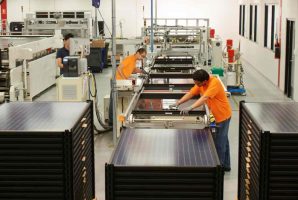Australia’s largest electricity companies have backed the Australian Energy Market Operator’s decision to abandon plans to model a future scenario based on the Morrison governments ‘gas led recovery’ as part of the next Integrated System Plan, saying the scenario was not realistic.
AEMO is currently consulting on proposed assumptions and modelling approaches ahead of the next iteration of its Integrated System Plan, which serves as an influential guide for the next stage of development needed for Australia’s main electricity grid.
AEMO had initially floated the idea of modelling a future grid scenario based on the Morrison government’s preferred ‘gas led recovery’ approach – where the federal government funds increases in the supply of gas and prices are presumed to fall. AEMO later renamed this scenario to a “diversified technology scenario”, but its parameters still reflected the gas-friendly vision of the Morrison government.
But AEMO subsequently said it was reconsidering the plan to include the gas led recovery as one of five core scenarios and would instead use it as the basis of a less detailed ‘sensitivity’ analysis based on lower gas prices.
The proposed relegation has been almost uniformly welcomed by major energy market participants in submissions made to AEMO released publicly this week, with many suggesting that it would be preferable for AEMO to focus on preparing for a transition to zero net emissions.
AGL Energy told AEMO that it supported the relegation of the ‘diversified technology scenario’, suggesting that doing so properly reflected the actual prospects of reductions in domestic gas prices.
“AGL supports AEMO’s decision to convert the Diversified Technology Scenario (previously named the Gas-led Recovery Scenario) into a sensitivity as this better reflects the likelihood that low priced gas supplies will become available,” AGL said.
AGL was among a number of respondents who backed AEMO’s plan to model a scenario based on a transition to net zero emissions, saying that while the federal government has refused to commit to such a target, every state and territory has by 2050 or earlier.
“We consider this change appropriate given all Australian states and territories have adopted a target of net zero emissions by at least 2050 and recent Federal Government discussions regarding adopting a similar target,” AGL said.
TasNetworks went so far as to suggest that a transition to net zero emissions should be the basis of AEMO’s “central” baseline scenario.
“TasNetworks suggests that the proposed scenario of 2050 Net Zero is best suited to be the Central scenario. The basis for 2050 Net Zero to be the Central scenario is the strong stakeholder support this scenario received, with all Australian states and territories having a commitment to a net zero target and the more recent emphasis by the Australian government to reach net zero emissions as soon as possible and preferably by 2050,” TasNetwork’s submission said.
Origin Energy, which operates a significant portfolio of gas projects, too welcomed the removal of the ‘gas led recovery/diversified technology’ scenario saying it had been ‘internally inconsistent’.
“Given that the diversified technology scenario did not appear to be internally consistent, we support AEMO’s proposal to capture this potential future through a low gas price sensitivity instead,” Origin’s submission said.
In an earlier submission, Origin Energy had pointed out that the most likely pathway for Australia’s electricity system will see lower cost solar and storage technologies doing the heavy lifting in terms of emissions reductions, even under a ‘gas led recovery’, as the cost of carbon capture and storage technologies will likely remain prohibitive.
The third of Australia’s ‘Big Three’ electricity retailers, EnergyAustralia, likewise supported the removal of the gas-led scenario and supported AEMO’s intended focus on modelling a scenario consistent with a transition to zero net emissions.
Global oil and gas producer Shell was a rare voice in support of AEMO modelling the ‘gas led recovery’, saying it was still ‘worth investigating’.
“Shell Energy considers it a scenario that was and remains worth investigating as it combined the scope for new technologies, constraints within the distribution network impacting the roll out of distributed energy resources and other plausible issues alongside low gas prices,” Shell said.
AEMO will instead focus on modelling scenarios based on ‘slow growth’, ‘current trajectory’, ‘net zero’, ‘sustainable growth’ and an ambitious ‘export superpower’ scenario predicting rapid growth in renewable hydrogen production.
AEMO intends to publish a final Inputs, Assumptions and Scenarios report (IASR) before the end of July, which will underpin the work undertaken for the 2022 Integrated System Plan.










